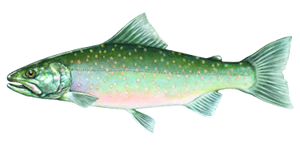Ninemile Valley Abandoned Mine Restoration
Goals
Perhaps no place in Montana illustrates a more striking juxtaposition between an iconic fishery nestled within an over-exploited landscape than the Clark Fork watershed. The Clark Fork is one of the state’s most popular angling destinations; by the time it flows out of Montana, it has become the state’s largest river. Native westslope cutthroat and bull trout maintain a foothold in the drainage, as do wild rainbows and brown trout. This, despite the fact that the Clark Fork and its tributaries have been seriously degraded by clear-cut logging and hardrock and placer mining for the past 150 years.
Ninemile Creek, located 20 miles west of Missoula, is one of the most important native trout tributaries in the Middle Clark Fork River watershed and one of the most affected by mining impacts. Placer mining in the drainage peaked in the 1870s and dragline dredging became prominent in the early 1940s. Large-scale dredge operations worked much of the valley bottom in Upper Ninemile Creek and have resulted in multiple thread stream channels, abandoned dredge ponds, and large piles of overburden (material that is removed to access the minerals underground) 15-20 feet high that dominate the stream corridor. Many of the streams that used to feed Ninemile Creek no longer reach it—emptying instead into dredge ponds that line the floodplain.
Abandoned placer mines are responsible for numerous detrimental impacts on Ninemile Creek and various tributaries throughout the watershed including: dewatering, flow alteration from mining-induced changes to channel geometry and substrate, channel and floodplain confinement, habitat alteration, fish passage barriers, and sediment loading due to significant bank erosion. The goals of the Clark Fork Restoration Program include (1) rehabilitating stream, floodplain, and hillslope processes impaired by previous placer mining operations, (2) restoring aquatic habitat conditions that support all life stages of native fish, and (3) preparing a restoration design that is cost-efficient and incorporates desires and needs of multiple stakeholders.
Tactics
The Ninemile Creek watershed has been a focal point of cooperative restoration efforts by local, state and federal government, as well as private watershed groups and individuals. These efforts include filling of dredge ponds, stabilization of contaminated mine waste and removal of overburden dredge piles, while shaping new stream channels and establishing vegetation. This collaborative process has yielded significant progress towards watershed restoration and fisheries health…not to mention the fishing.
Victories
Several mine reclamation projects on tributaries to Ninemile Creek have been successfully completed, yielding a reduced sediment load, enhanced fish passage, and healthy, unimpaired stream channels. Trout are now freely moving between Ninemile Creek and the upper reaches of Mattie V and Twin Creeks for the first time in 70 years.
Staff Contact
Author of this Page
Paul Parson




